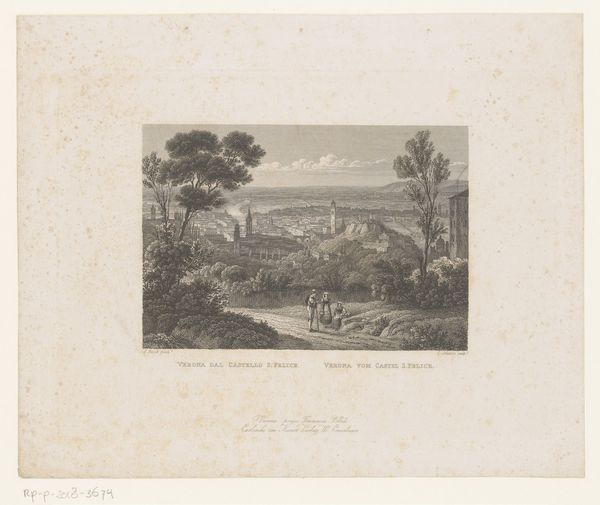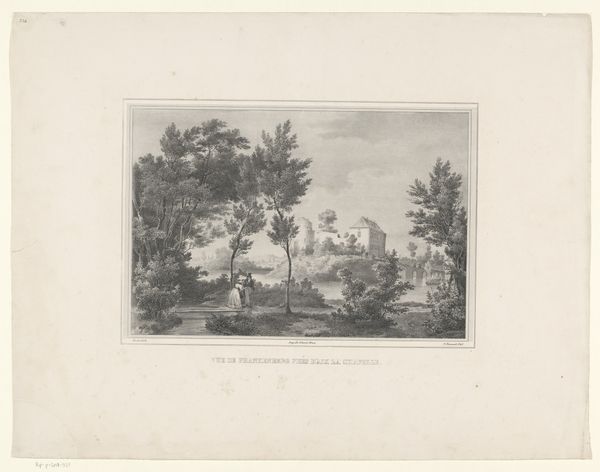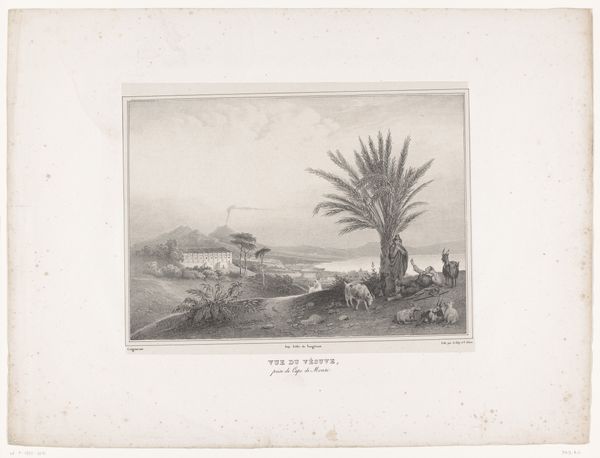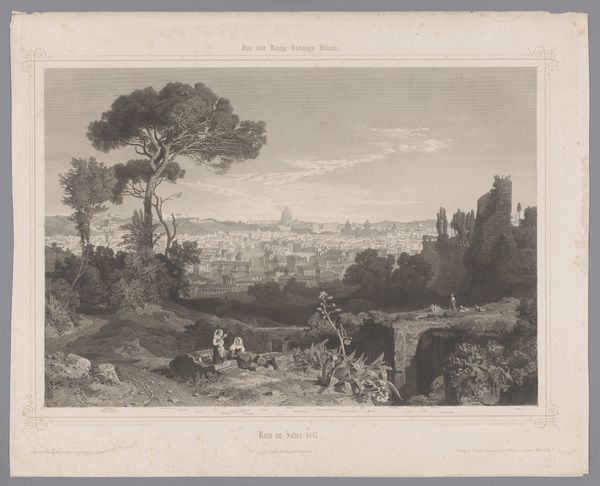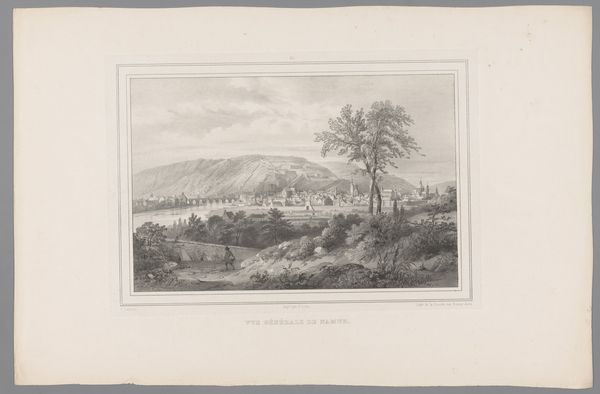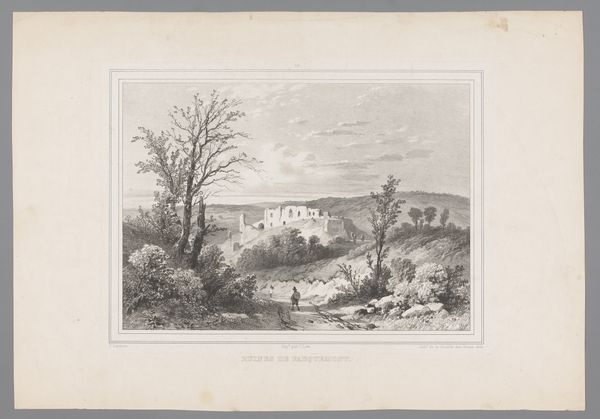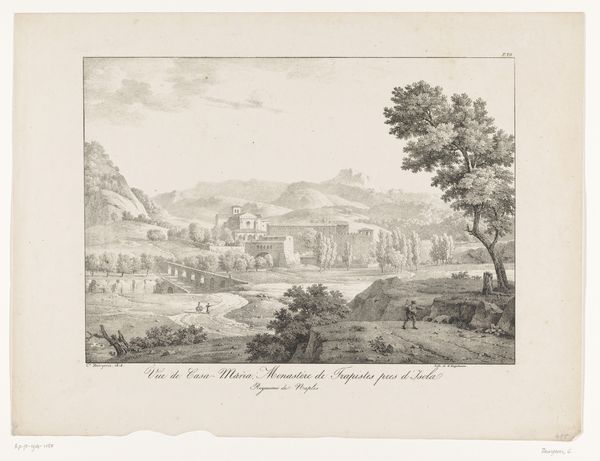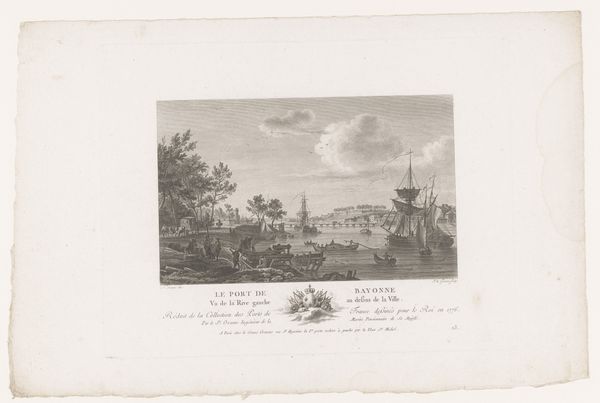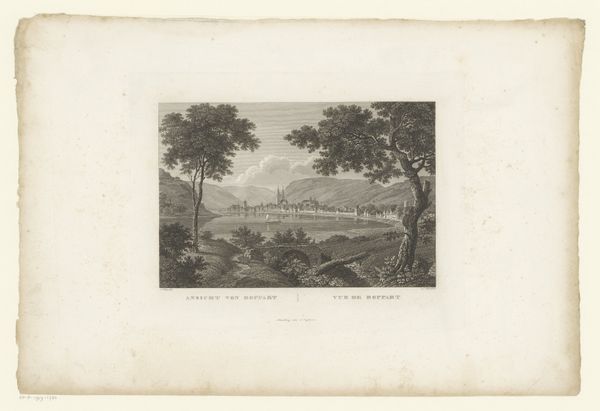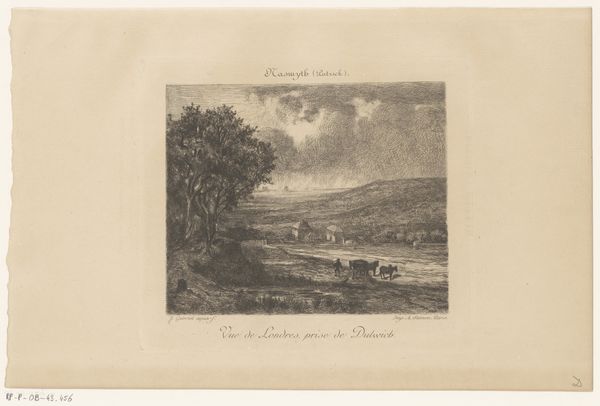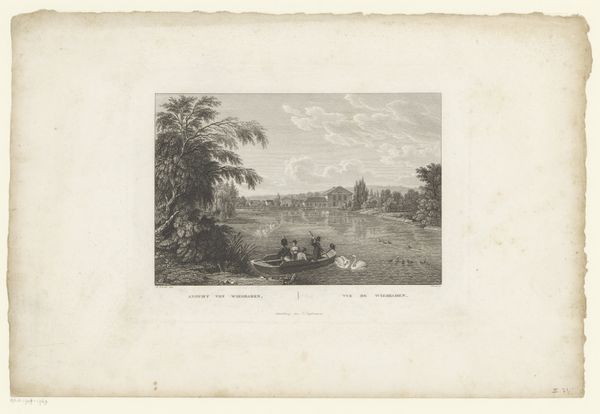
print, engraving
#
neoclacissism
# print
#
old engraving style
#
landscape
#
engraving
#
realism
Dimensions: height 422 mm, width 588 mm
Copyright: Rijks Museum: Open Domain
Curator: It's rather charming, don't you think? A kind of idyllic pastoral scene. Editor: Yes, there’s a distinct melancholy, a subdued tranquility. Everything seems carefully arranged, almost staged. Curator: This is "Goatherds in the Hills near Capri" by Antoine Pierre Mongin, created between 1818 and 1827. Mongin captured this landscape using engraving techniques. The figures are so small; I think the scene is more about memory of Arcadia. Editor: Absolutely, you see how the engraving defines texture? The different thicknesses create highlights and shadows that define volume in those humble stone structures. I wonder how many plates were used for the print; the blacks are richly layered for an engraving, lending a feeling of depth. Curator: The ruined structures really stand out, too. Think of the symbolic weight here; time's passage, the transience of human endeavor juxtaposed against the enduring natural world. They almost represent fragments of cultural memory itself. And Mongin sets this against that city nestled distantly into the landscape. The ideal within reach. Editor: Interesting how Mongin chose printmaking, too. Prints facilitate mass consumption; does that democratize access to beautiful imagery, or dilute the "aura" of the artwork? How does Neoclassicism translate into a commodity to be consumed? Curator: A provocative thought. I am seeing the potential for wider accessibility. Instead of a singular painting destined for a private collection, these printed landscapes could have disseminated certain Romantic notions, a visual rhetoric accessible to a broader audience. Editor: It certainly challenges notions of originality and the artist’s hand. Every impression is the result of labor, pressure, and a network of exchange. Curator: Reflecting upon Mongin's artistic output, I see him as more than a mere recorder of landscapes; he functions as a transmitter of enduring cultural myths and values through the medium. Editor: And I am left pondering the nature of labor in art. A delicate rendering born from strenuous exertion to spread a certain vision. Thank you for sharing.
Comments
No comments
Be the first to comment and join the conversation on the ultimate creative platform.
